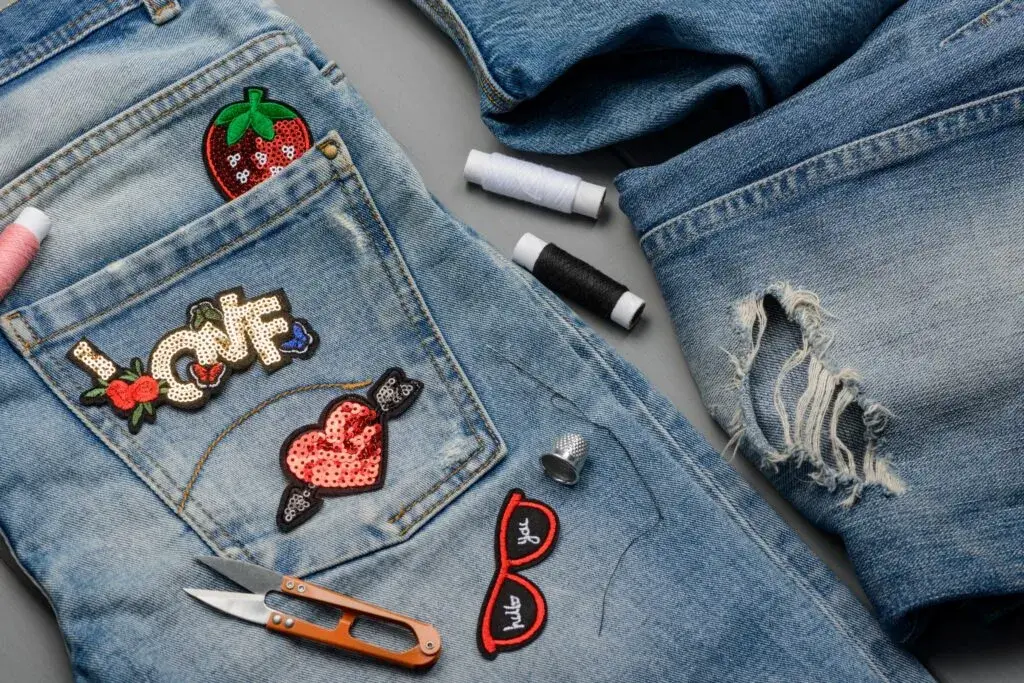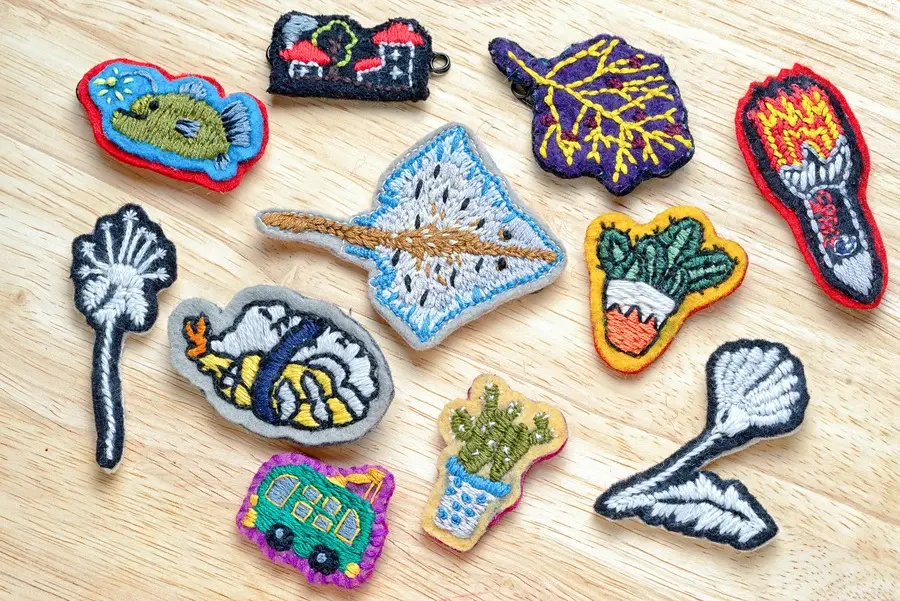The History of Embroidery
Embroidery has existed across numerous cultures and societies for thousands of years, with one of the earliest examples occurring in China as far back as the 5th century BC. So, what’s embroidery? It’s the craft of decorating fabric using yarn or thread with a needle, but can sometimes involve sequins, beads, and other materials.
And it’s lasted as a highly popular form of decorating clothing and accessories up to the present day, with countless examples found in homes and on runways. In this post, we’ll dive into embroidery’s thorough and colorful history, from its origins to how it manifests today. Let’s jump in!
Early Embroidery in Human History
As we have already established, embroidery is not a recent invention. Indeed, it’s been around for thousands of years and has persisted throughout numerous cultures as a staple form of decoration. But embroidery has also served multiple other purposes beyond aesthetic improvement. Let’s take a look at its origins.
The Origins and History of Embroidery
Tailoring clothes or blankets to patch and reinforce fabric is where the craft of embroidery truly found its roots. The possibility of not only reinforcing but decorating fabric items became apparent through the development of various sewing techniques.
The basic techniques of embroidery have remained consistent from its earliest iterations to the modern day. These include:
- Buttonhole stitch
- Blanket stitch
- Chain stitch
- Running stitch
- Cross stitch
- Satin stitch
While most other crafts have benefitted from modernization, embroidery hasn’t had to adjust for modernity’s sake. We all know the saying: if it isn’t broken, don’t fix it!
Some more intricate examples of embroidery from various historical periods demonstrate a craftsmanship superior to more modern creations – unusual in the world of craftsmanship. Typically, crafted items advance from a more primitive form to a more complex model as techniques develop through experimentation. With embroidery, some of the finest discoveries are from hundreds of years ago. How does that work?
Examples of Ancient Embroidery
Embroidery has persevered throughout history, dating back to the Neolithic era! Of all the various cultures that have contributed to embroidery’s rich history, three, in particular, stand out. Let’s walk you through them.
Egypt
Compared to some ancient cultures, Egyptian embroidery uses a relatively narrow scope of materials and techniques. Still, this didn’t stop their contributions from being culturally significant and celebrated for their beauty. In fact, this was especially true among royalty, with numerous rich examples dating back to ancient Pharoahs’ tombs.
So far, the following techniques have been identified in ancient Egyptian embroidery:
- Seed stitch
- Chain stitch
- Satin stitch
- Stem stitch
- Blanket stitch
- Twisted chain stitch
- Running stitch
A highly notable example of embroidery was found in the tomb of Tutankhamun, first discovered in November 1922. This became known as the ‘Falcon’ tunic, crafted by weaving numerous finely spliced threads into the fabric. There were also innumerable items with decorative needlework across the front, including beaded and stitched designs.
China
Embroidery in China has deep roots, dating as far back as the Neolithic era – that’s almost 12,000 years ago! For this reason, it’s no wonder Chinese embroidery features some of the most complex designs out there; they’ve had plenty of practice! This is largely due to the Silk Road and the domestication of silkworms between 202BC and 220AD, providing the nation with ample silk for their fabric craftsmanship.
There are four primary schools of Chinese embroidery, including the Shu, Yue, Su, and Xiang schools. The Su style is largely the most well-known and celebrated, dating back over two thousand years. Consisting of up to one hundred types of threads and forty stitch varieties, this school’s primary focus falls on the natural world. More than likely, you’ve seen images from the Su school of embroidery and didn’t even recognize it as such. Flowers, butterflies, birds, plants – it’s all there.
India
Indian embroidery is some of the most intricate and beautiful in the world, which stems from its historical roots. A particularly popular kind is known as zardozi, a combination of the words zar (gold) and dozi (work). These pieces are made by twisting gold and silver thread into tiny spirals, which are then fixed into place upon the original fabric.
The popularity of zardozi peaked in the 18th and 19th centuries. It was predominantly used for palace furnishings, but the earliest examples of the practice have been dated as three-thousand years old. Other kinds of Indian embroidery include chikan, kantha, phulkari, shisha, and banjara.
Evolution of Embroidery Techniques and Materials
Although the fundamentals of embroidery have remained the same for thousands of years, trends developed and wove throughout various historical periods. One example is how embroidery became symbolic of wealth and status, especially in many Muslim societies. The more intricate the designs, the higher the status of the wearer.
A similar concept was adopted in 18th-century England, wherein a woman’s skill at embroidery was a signifier of her social rank. However, one invention, in particular, stands out in the history of embroidery and is part of why the process has remained so consistent throughout previous centuries.
The Invention of the Sewing Needle
It may seem odd to consider something as small and seemingly insignificant as the sewing needle would need to be invented. It isn’t a smartphone or a vehicle; it’s just a piece of metal, right? Well, not really! The sewing needle revolutionized the world of embroidery, and it all started in a small English town called Redditch. Sort of.
You see, the first recorded example of a needle being crafted comes from 1639, and the reason Redditch has such a claim to it is due to their water-powered scouring mills. These mills produced sewing needles so refined that they made the crafting of exceptionally intricated designs far easier and quicker.
Of course, this isn’t quite where the story of the sewing needle begins. The sewing needle is mentioned in religious texts like the Bible and Quran, and evidence of a sewing needle with an eyelet date back to the Gravettian period – almost twenty-five thousand years ago! However, Redditch can certainly lay claim to enhancing this needle’s popularity.
Embroidery in the Middle Ages and Renaissance
Two other key points where embroidery really hit its stride were the Middle Ages and the Renaissance, largely due to the significant artistic movements occurring at the time. Let’s dig a little deeper.
Embroidery in the Middle Ages
Embroidery took an especially luxurious turn during the Middle Ages, thanks to the renewed availability of silk, gold and silver threads, and expensive fabrics. They were often used to recreate religious scenes, making them highly popular within churches and even among the clothing of the wealthy.
Perhaps what made embroidery during this period so impressive is the extensive detail seen in the designs. Everything was done by hand, making embroidery an incredibly precise and rarefied art form. No assistance from machines here!
The Gothic movement was especially influential on European embroidery during the fourteenth century. These pieces would often depict Christian saints, nature, and hunting. It incorporated many geometric patterns and metallic threads and was often used to create tapestries, but the embroidery style was applied to just about everything. This includes buildings, fine art, clothing, and decorative objects.
It was also during this period that, at least in Europe, that embroidery reached a level of luxurious excess. For instance, when King Charles V of France was just fourteen, he was provided with a cape embroidered with gold thread featuring a lion’s head entirely crafted out of pearls that had been sewn into the fabric. Needless to say, this was a marked difference from the humble beginnings of embroidery used for reinforcement.
Embroidery During the Renaissance
Renaissance embroidery utilized a different conceptual process than previous iterations in that the original design would be drawn out with a pencil or pen before sewing into the fabric. It could often take artists weeks to complete a piece, and depending on the complexity, could even take them years.
This kind of embroidery, similar to the embroidery we see from the Middle Ages, was entirely completed by hand. The intricate designs were completed via a sewing technique known as ‘pointing’, which used tiny stitches to fill in block colors and create new lines. This type of art first originated in the twelfth century and was incredibly popular up until the fifteenth century. It can be found in tapestries, cross-stitch patterns, and even on some more expensive wall hangings.
A notable style was spearheaded in Italy and was known as goldwork. It was especially prevalent in Florence and consisted of sewing metal thread into embroidered art, bringing the design and detail to a whole new aesthetic level. Although the practice originated in Belgium, it was the Florentines who made it their own, resulting in the world-famous Opus Florentinium.
Goldwork wasn’t restricted to artwork, either. The clothing of the wealthy would also be adorned with this metallic style, with gold and silver thread often intricately worked throughout satin. Even bedding was sewn in this way, but only for the upper classes.
Modern Embroidery
In the modern era, embroidery has seen some significant changes of its own. Since the Industrial Revolution, it has been incredibly common for all needlework to be completed via machine. Why? They worked faster and could replicate complex designs with ease, which meant that production could be completed far more quickly.
As with much of the art and crafting world, social media has affected the world of embroidery – but we consider this to be an advantage! Since the late 2010s, the art of embroidering by hand has seen significant growth, largely thanks to the rise of visual media platforms such as Instagram and Pinterest.
Although mechanical embroidery is still very much used – especially in mass production – we haven’t yet lost the important craft of hand-sewn designs.
Final Thoughts
Throughout its rich and complex history, embroidery has remained a highly popular way to decorate an interior space or the clothes in your closet! It has been used to reinforce clothing, repair items, indicate class status, and demonstrate worship. The history of embroidery is a rich tapestry all its own, and at THE/STUDIO, we’re here to keep the tradition alive with beautiful, customizable, and wearable art.




